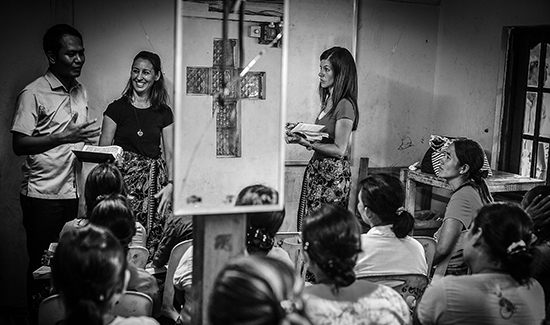

by Elaine L. Sommerville, CPA
Editor’s Note: This article first appeared on Christianity Today’s ChurchLawAndTax.com. Used with permission. Learn how to become a member of Church Law & Tax today to get access to hundreds of more articles helping churches with their legal, tax, finance, and risk management matters.
In churches and other nonprofits, benevolence programs are established to identify and meet the needs of under-resourced individuals—people who are unable to meet essential needs for themselves or their families. Benevolence programs stem from a church's desire to do good to others, show goodwill, extend kindness, and extend charity to those in need. While benevolence is most commonly considered in light of finances, any program that provides resources is a benevolence program. In the majority of circumstances, no matter the method of meeting a need, there are financial considerations involved.
For a benevolence program to fall within the parameters of a church's tax exempt status, the program must serve a "charitable class." There are several acceptable charitable classes, including children, the elderly, the poor, distressed, or underprivileged. A charitable class must be comprised of either an indefinite or sufficient size to avoid benefiting private interests. For example in Private Letter Ruling 201205011, a nonprofit organization formed to aid children with special needs was denied exemption because all of the children belonged to the same family. While the target group—children with special needs—qualified as a charitable class, the size of the group was too small to constitute a valid exempt program.
If a program does not serve a charitable class, then more than likely, it does not meet the test for being a recognized exempt-purpose program. While churches may operate programs for several charitable classes, most benevolence programs are aimed at providing relief to those suffering a financial hardship or experiencing an unusually stressful situation.
The key to operating a successful benevolence program is in the structure of the program. The more structured a benevolence pro-gram, the easier it will be to operate, and the more successful it will be. In order for a program to be in accordance with the exempt status of the church, it must operate according to a formal structure. (Church in Boston, 71 T.C. 102 & PLR 201235022) Additionally, a well-structured program protects the church's employees from being caught in the middle of a person in need and the church's decision to provide assistance.
A method of verifying the person is a member of a valid charitable class, that a need exists and the applicant does not have available resources to meet his needs. Candidates for benevolence funds should be required to submit an application and interview with a church leader. The application and interview process will also document:
A set of guidelines so church staff members have the tools to operate the plan. Some common items that are addressed in a benevolence policy include:
CAUTION: Do not link approval of a benevolence request to a person's tithing records. This could jeopardize their charitable contribution receipt.
Are there certain situations that will disqualify an applicant?
A manner of reviewing the above information by persons independent or disinterested from the person making the request.
Discretionary Funds
Many churches maintain a discretionary fund for a minister's use for various business items. It is not uncommon for these funds to be used for benevolence assistance outside of a church's established program.
The benevolence paid out of this fund should be limited in a dollar amount and must still meet the documentation requirements mentioned above. If the recipient of the benevolence funds does not complete the necessary application, then the minister should complete it for them. This should not be used as an avenue to avoid the church's formal benevolence program.
Repeat Requests
While most benevolence plans are designed primarily to address short-term needs, churches should consider how they will handle situations that require long-term assistance. Some people encounter extended illnesses or circumstances that prohibit them from working and providing for their families. These situations should be cautiously supported by the church. The church should take the following steps:
Designated Gifts
The most common questions regarding benevolence usually center on the subject of designated contributions. It is not acceptable for a church to accept a contribution that is earmarked for an individual, even one with a need, and pass it through outside of the normal processes of the church. The church is allowed to solicit the congregation for additional funds for its benevolence program, but it is not allowed to raise unlimited or undefined funds for a specific individual.
Example. The Smith's house burned and the family has lost everything. The church should not raise funds for the Smith family. It should inform the congregation that it is raising money for the benevolence fund in order to be able to assist the Smiths as well as continue to assist others at this time.
The church should have a gift acceptance policy that states repeatedly that any designation is considered a "suggestion" and the final use of all funds is at the discretion of the governing body, such as the finance committee, board of directors, or elders. (I cover this topic in the article, "When Gifts Come with Strings Attached" (Church Finance Today, December 2012).